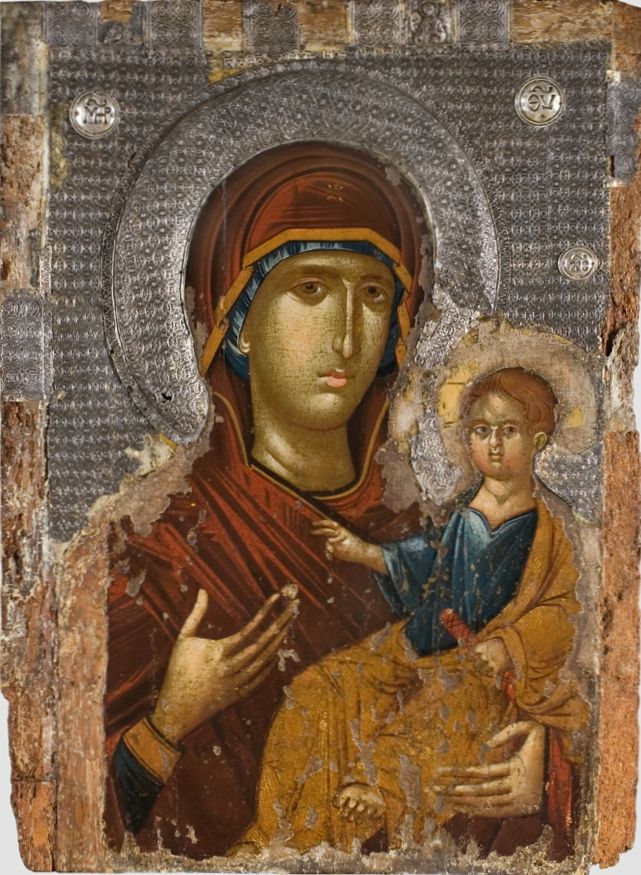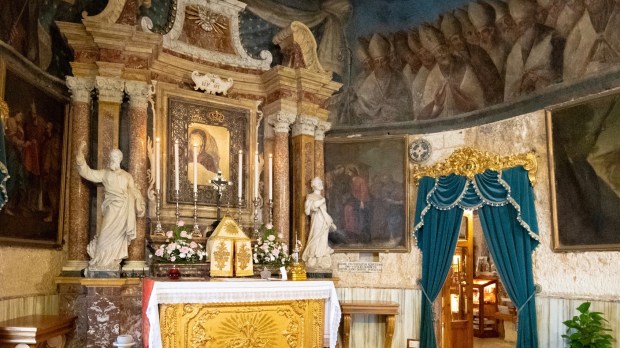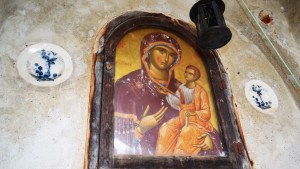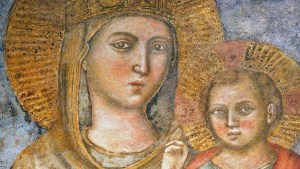Certain icons representing Mary depict her in a way known as the Hodegetria.
The Hodegetria is an iconographic representation of major theological significance within the history of Christian visual arts. It portrays the Theotokos (that is, the Mother of God or, more accurately, the God-bearer) holding the Child Jesus at her side – much like every other Madonna, yet with an important twist. In this icon, Mary’s right hand directs the viewer’s gaze towards Jesus. In short, she is showing the Way.
Indeed, this motif is sometimes referred to as Our Lady of the Way in the Western Church, emphasizing the role of Mary as a guide along the path to salvation.
That’s what the etymology of the Greek Hodegetria literally means. The word stems from the hodegos, meaning “guide” and, by extension, “leader.” The term itself encapsulates the core Mariological notion of Mary as mediatrix: the ultimate spiritual guide, leading believers towards the divine through her nurturing presence, example, and intercession. This is of course represented perfectly in Jesus’ first miracle at Cana.
Some versions of the icon show Mary’s head softly tilted towards the Child, as if doubling down on her mission of showing the Way.

Go this way
Now, there is something more in the etymology of the word. The term hodegos also derives from yet another term, hodos, meaning “road,” “path,” or (again), “way.” It is the root of the word exodus: ex-hodos, meaning “to depart,” “to set off on the road.” If Jesus is the Way, then the Hodegetria is inviting the viewer to “depart.”
Perhaps a better way to understand this “departure” includes looking at Jesus’ Transfiguration. In Luke’s Gospel (9:28-36), Jesus, Moses, and Elijah are depicted discussing Jesus’ imminent departure. The word used in the Greek text is precisely exodos, in a clear reference to Moses’ exodus from Egypt. Jesus’ departure is seen as the culminating moment of the history of salvation, transitioning from Moses’ liberation to the one offered by Jesus. It is only natural that the Hodegetria shows the way “out” of the slavery of sin.
Many versions
The most venerated Hodegetria icon, regarded as the original, was once housed in the Monastery of the Panaghia Hodegetria in Constantinople. This image, said to have been brought from the Holy Land by Eudocia, the wife of Emperor Theodosius II (408–450), and (mistakenly) attributed to St. Luke, stood as a centerpiece of Byzantine devotion. The original icon, unfortunately, has likely been lost to time, though legends persist of its journey to Russia or Italy.
Despite the potential loss of the original, the Hodegetria motif has endured through a multitude of copies, many of which are revered as some of the most sacred icons in Eastern Orthodoxy – and Russian Orthodoxy in particular.
Most of these copies have developed their own distinct traditions, contributing to the widespread dissemination and enduring significance of the Hodegetria in Christian iconography.




